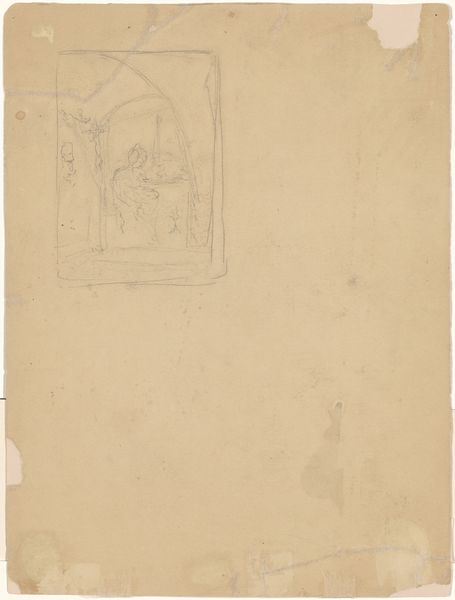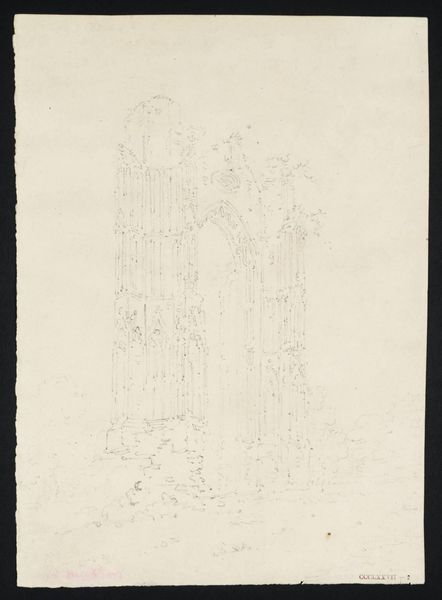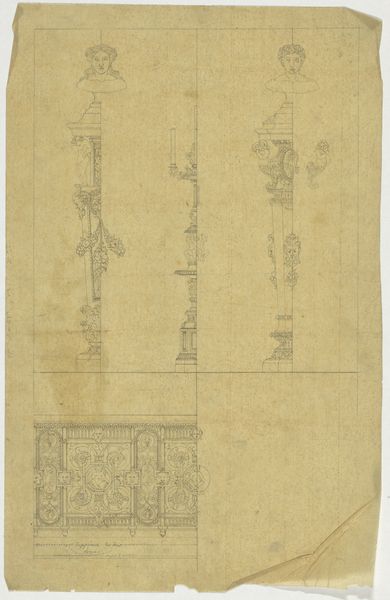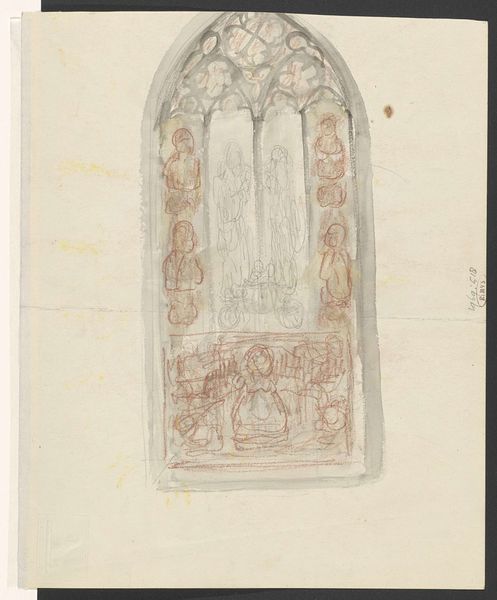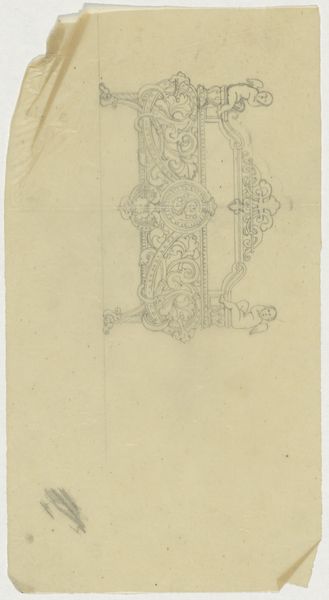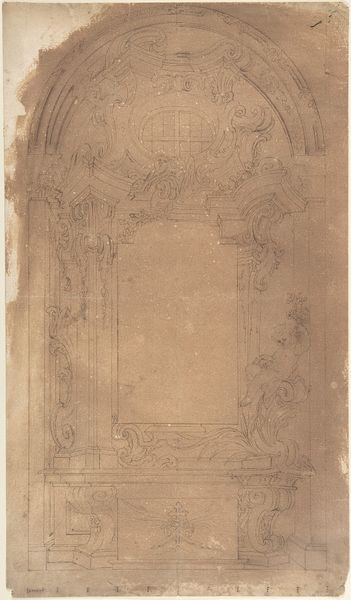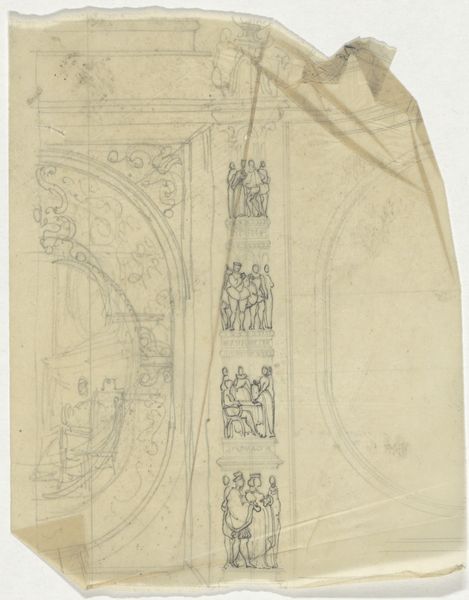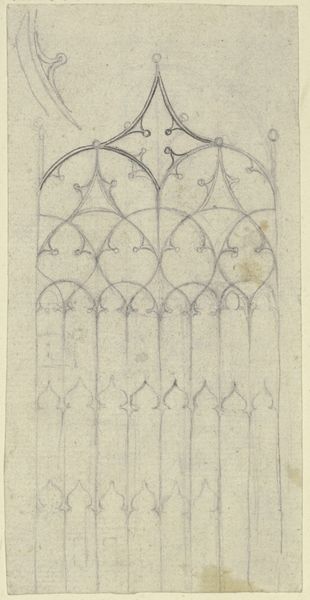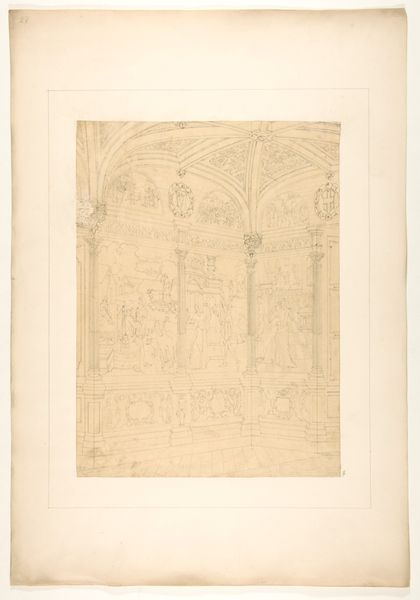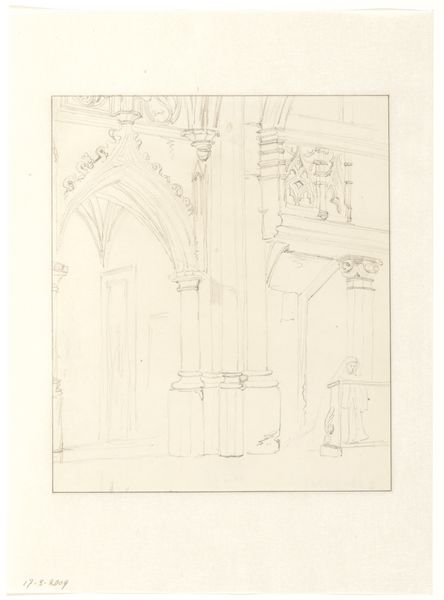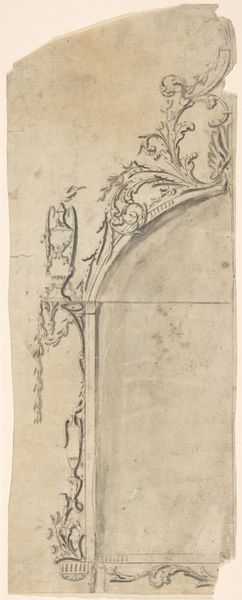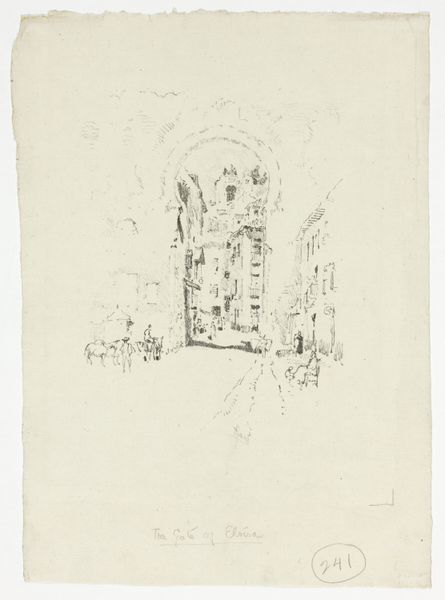
drawing, paper, ink, architecture
#
drawing
#
etching
#
paper
#
11_renaissance
#
ink
#
geometric
#
line
#
architecture
Dimensions: sheet: 27.2 × 24.3 cm (10 11/16 × 9 9/16 in.)
Copyright: National Gallery of Art: CC0 1.0
Curator: Here we have "Two Architectural Studies," an ink and paper drawing, potentially an etching, by Lattanzio Gambara, dating back to the Renaissance period. Editor: My first impression is that it's tentative. These aren't bold statements of architectural vision, but rather quiet explorations of form. What strikes you about its structure? Curator: The linework, certainly. Gambara uses line not just to define edges, but to suggest volume, depth, and the play of light. Note how the density of the hatching implies shadow, giving form to otherwise spare geometric shapes. It's a fascinating dialogue between precision and fluidity. Editor: Indeed. And in that fluidity, I see the Renaissance grappling with the legacy of classical forms. These aren’t simple imitations of Roman architecture, but rather reinterpretations infused with a new era's sensibilities. The drawing, although minimal, alludes to the power structures inherent within architecture and how social hierarchies were encoded through architectural expression. Curator: I appreciate that socio-political reading. And it reminds me to look again at how Gambara directs the eye upward within each study, employing implied verticals to suggest grand scale despite the modestly sized paper. There is a sense of reaching, of aspiration within these constructed spaces. Editor: Do you see any evidence of specific commissions that might be useful? Or is the work more indicative of broader shifts in architectural styles during the time? Curator: The specifics of potential commissions require further art-historical sleuthing. We could research the patron system in the artist's region at the time. What I immediately see is Gambara practicing how best to capture the architectural zeitgeist in form on paper. The forms appear generic; what makes the sketches exciting is their formalism. Editor: And to expand on that excitement: How was Gambara able to depict a kind of hope, a vertical ambition representative of a growing culture while capturing a fleeting, spontaneous gesture? These buildings have weight precisely because they might fall apart on the page, reminding the Renaissance public of its delicate political moment. Curator: That precariousness you mention becomes Gambara’s formal victory, doesn’t it? These are not simply drawings of buildings. The suggestion is a representation of cultural dynamics as played out in geometric structure. Editor: Precisely. And on that note, I’d say our own dialogue reflects a larger critical exercise where both intrinsic artistry and historical dynamics matter, both aesthetically and politically.
Comments
No comments
Be the first to comment and join the conversation on the ultimate creative platform.

